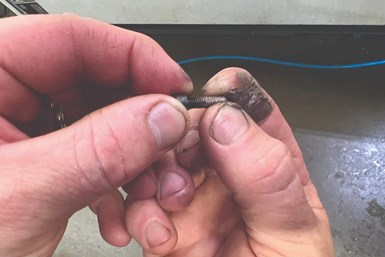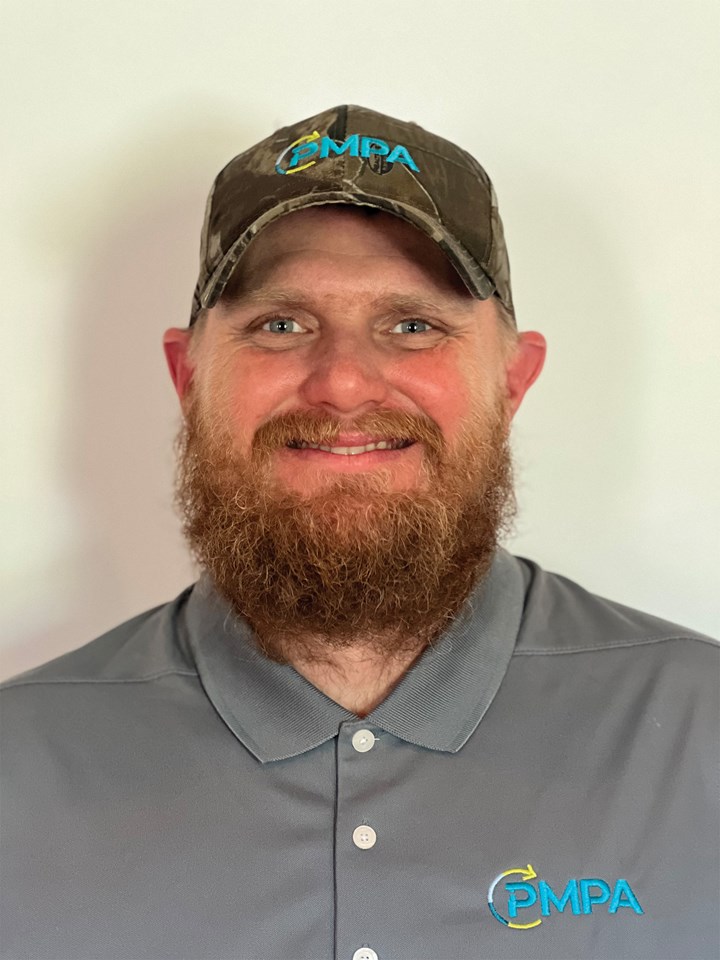Craftsman Cribsheet No. 117: A Little Dab to Prevent Machine Downtime
Using anti-seize in threads can reduce torque values required by 25-30% and help reduce machine downtime.

How many times have you tried to get a screw out of a holder only to have it so tight that you break the screw getting it out? You have followed the torque specs. Everything was done right, but after 40 hours of run time that screw just won’t come out. This is something I have fought for years in the shop.
This was a tip provided to me by PMPA’s Joe Gentile. I had a member shop put it into practice to see if there was a difference and they have seen a major improvement in screws not seizing in holders. Putting a little anti-seize on every screw when you change inserts has nearly fixed this problem. After a test of 100 insert changes here are the results.
No Anti-seize
- 13% of screws removed with no problems.
- 70% of screws required excessive force to remove.
- 15% of screws required additional mechanical advantage to remove (cheater bar/extra long wrench)
- 2% required holder removal and destruction for the screw for removal.
With Anti-seize
- 85% of screws removed with no problems.
- 15% of screws removed with excessive force.
- 0% requiring additional mechanical advantage.
- 0% requiring holder removal and destruction of screw for removal.
You need to dab a little on the start of the thread. Take the screw and run it up between your fingers while screwing the screw between your index finger and thumb. This works the anti-seize down into the threads with a smooth consistency. You don’t want to overdo it. Having too much invites dirt, debris and chips to stick to the threads. A little goes a long way. Why do we need to use anti-seize? What causes this problem to begin with? It comes down to three main factors.
Friction. Debris get into threads no matter how much we clean them — microparticles in unfiltered coolant. Vibration works small particles down in there which increases the friction to remove the screw. Anti-Seize helps seal the thread from debris and provide additional lubricity, decreasing friction on removal.
Corrosion. Corrosion is a problem everywhere, but even worse on machines using water-based coolants. The threads build up with corrosion causing them to stick together, dramatically increasing the force required to remove them. Also, corrosion weakens the structure of the thread. Making them more prone to breakage. The sealing provided by anti-seize as well as the anti-corrosive properties help protect the threads from corrosion.
Galling. Galling is generally a product of over torquing, but can come about from vibration. Galling also is known as cold welding. The thread is pressed together so tightly that it literally forms a bond. In extreme scenarios, there can be so much pressure and heat that the fasteners literally weld together. Changing inserts by feel without torque wrenches is often the cause. Anti-seize creates a thin layer between the two surfaces, preventing galling.
Use of anti-seize in threads can reduce torque values required by 25-30%. The anti-seize forms a small layer between the threads, so you get a more consistent clamp across the whole body of the thread. I suggest putting some anti-seize in little magnetic spice containers and hanging them on every machine, so, it’s always right there to use. If you put it right by the machine door, it’s a visual management technique to remind our performers to dab a little anti-seize. A little dab will prevent the headache of a broken screw and a down machine.
About the Author
David Wynn
David Wynn, MBA, is the PMPA Technical Services Manager with over 20 years of experience in the areas of manufacturing, quality, ownership, IT and economics. Email: dwynn@pmpa.org — Website: pmpa.org.
Related Content
Roles of Women in Manufacturing: What I Learned
Over 20 women were featured in the Roles of Women in Manufacturing series, which started in January 2023.
Read MoreDo You Have a Quoting Process?
The only way to have repeatable results is to have a process.
Read MoreOnshoring Weather Report: Strong Tailwinds!
Onshoring, reshoring, nearshoring: these terms are showing up with increasing frequency in the news and online. But is there evidence that these are real?
Read MoreCraftsman Cribsheet No. 129: How to Beat the Heat
Shops tend to heat up in the summer. Here are some tips for staying cool in the warmer months.
Read MoreRead Next
Do You Have Single Points of Failure?
Plans need to be in place before a catastrophic event occurs.
Read MoreSeeing Automated Workpiece Measurement in Real Time
User-friendly inspection software for CNC machining centers was shown at IMTS 2024 monitoring measurements between and after machining while performing SPC based on recorded measurement values.
Read More5 Aspects of PMTS I Appreciate
The three-day edition of the 2025 Precision Machining Technology Show kicks off at the start of April. I’ll be there, and here are some reasons why.
Read More























